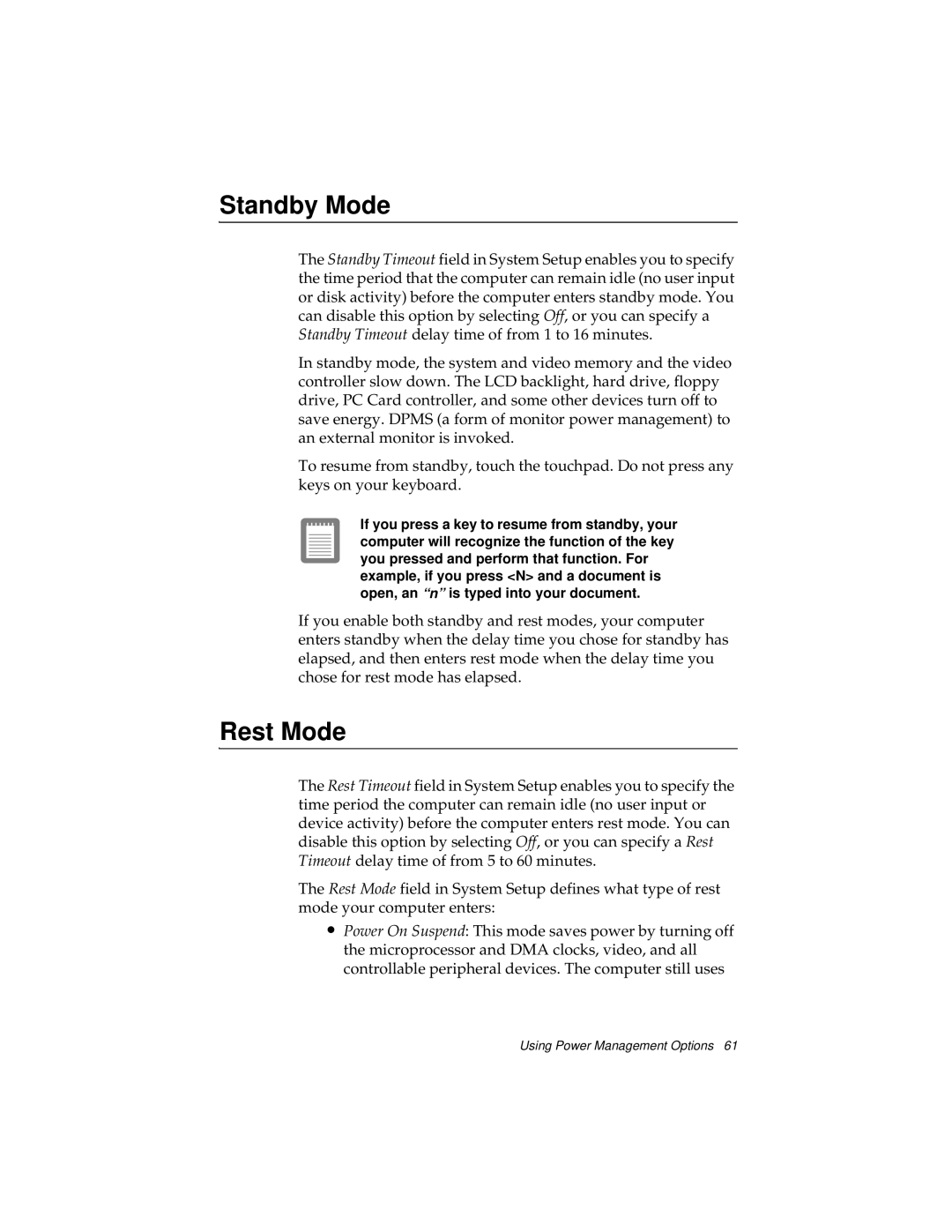
Standby Mode
The Standby Timeout field in System Setup enables you to specify the time period that the computer can remain idle (no user input or disk activity) before the computer enters standby mode. You can disable this option by selecting Off, or you can specify a Standby Timeout delay time of from 1 to 16 minutes.
In standby mode, the system and video memory and the video controller slow down. The LCD backlight, hard drive, floppy drive, PC Card controller, and some other devices turn off to save energy. DPMS (a form of monitor power management) to an external monitor is invoked.
To resume from standby, touch the touchpad. Do not press any keys on your keyboard.
If you press a key to resume from standby, your computer will recognize the function of the key you pressed and perform that function. For example, if you press <N> and a document is open, an “n” is typed into your document.
If you enable both standby and rest modes, your computer enters standby when the delay time you chose for standby has elapsed, and then enters rest mode when the delay time you chose for rest mode has elapsed.
Rest Mode
The Rest Timeout field in System Setup enables you to specify the time period the computer can remain idle (no user input or device activity) before the computer enters rest mode. You can disable this option by selecting Off, or you can specify a Rest Timeout delay time of from 5 to 60 minutes.
The Rest Mode field in System Setup defines what type of rest mode your computer enters:
∙Power On Suspend: This mode saves power by turning off the microprocessor and DMA clocks, video, and all controllable peripheral devices. The computer still uses
Using Power Management Options 61
